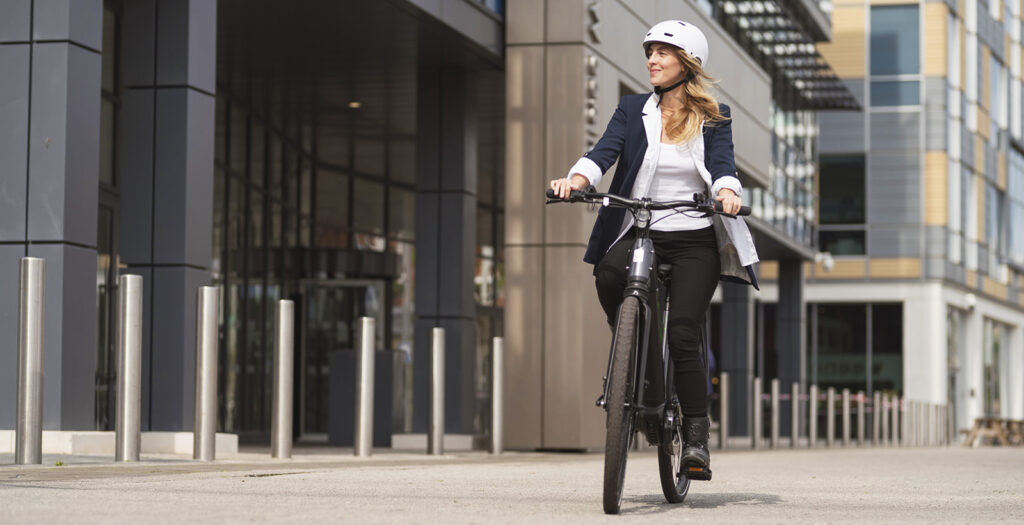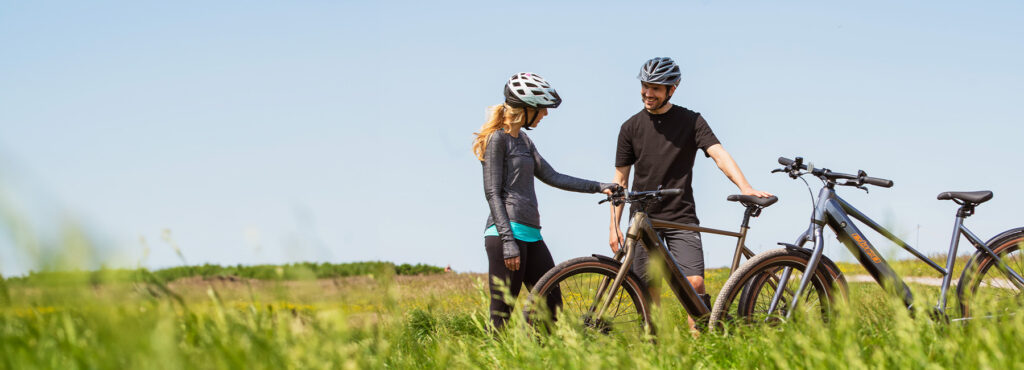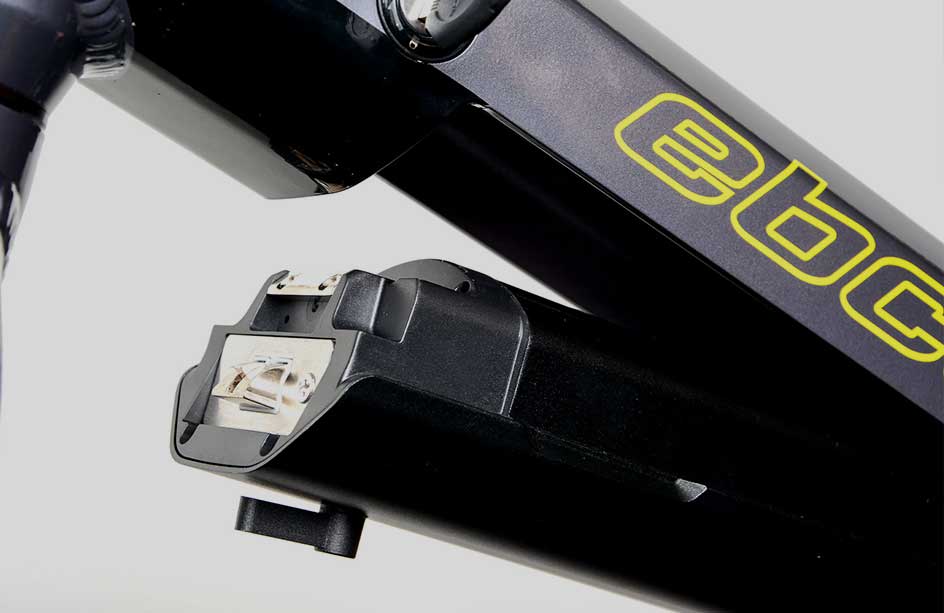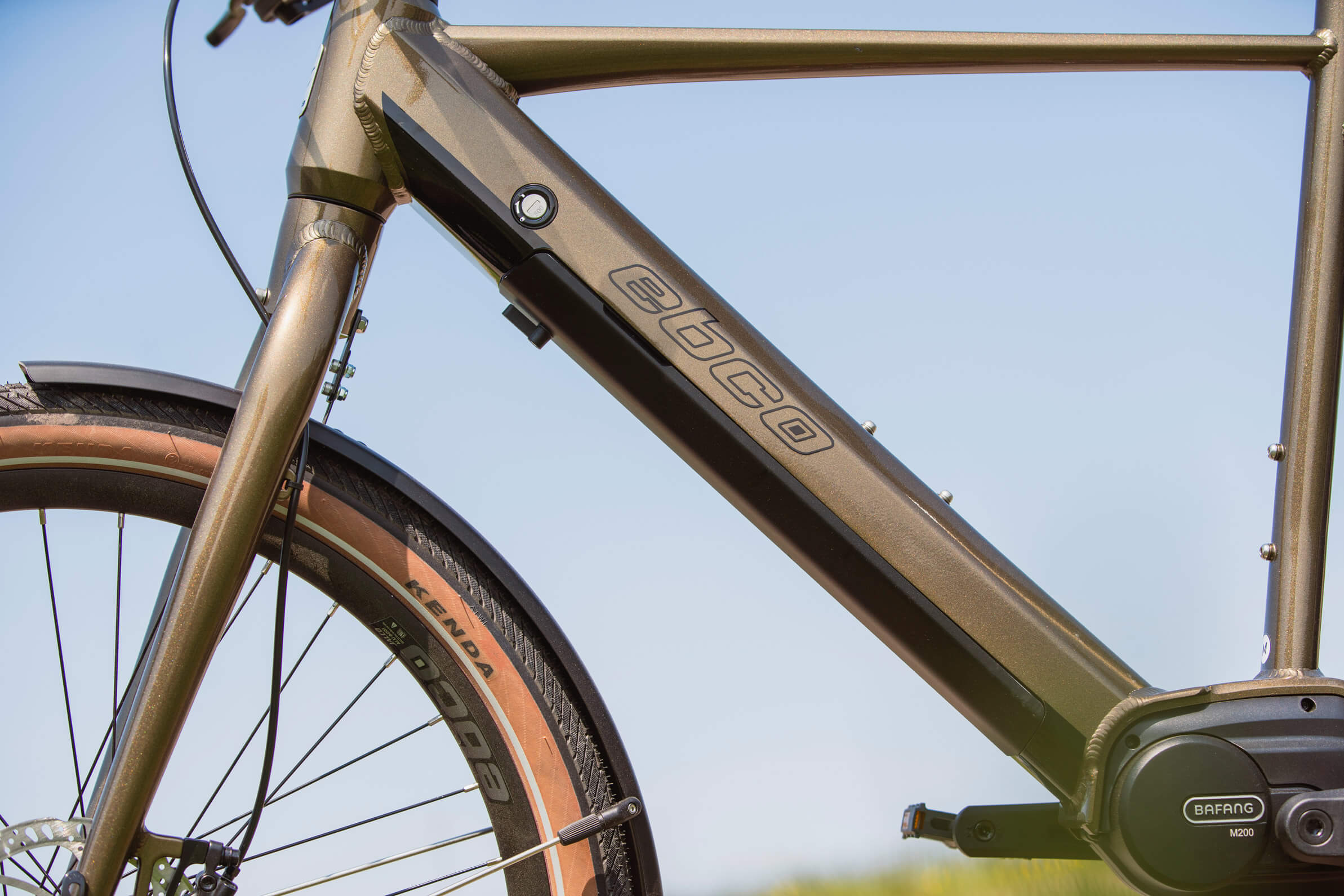Top tips for commuting by electric bike

Can I commute on any bike?
It is extremely common for people to start commuting on the bike they already own, after all, why not? We tend to agree that is a great starting place, but if you want to really up your enjoyment and efficiency there are indeed some hacks, including obtaining the right tool for the job in terms of style. Add to that a pedal-assist motor and you’ll more than likely find that you are more often drawn to the convenience of cycling. Indeed, studies from many regions with higher rates of electric bike use have found that, over time, those who formerly drove tend will with increased frequency leave it at home once they get accustomed to e-bike riding.
A commuter bike does what it says on the tin, so as far as tools for the job go it’s a fair assumption to start with this category, that is assuming your journey does not involve any public transportation such as trains. Commuter bikes are those that are set up for covering mile after mile of tarmac, with the notable exception of a less aggressive riding stance than a road bike. The tyres will worry less about weight and show greater concern for puncture protection. If not already fitted at the point of purchase, there will more than likely be mudguards, lighting, racking and a kickstand.
If you are using your bike for the first and last miles of your journey with mass transit in the middle then an electric folding bike would be an excellent investment and indeed these make ultra-capable commuters. In many instances, train companies will have off-peak only policies that require a booking to take bikes aboard in the UK, but folding bikes are generally more widely accepted at all times of the day. Across much of Europe, trains will have dedicated bike carriages or storage, but the UK has, as yet, generally not invested in developing this element of its rail services.
Aside from the aforementioned accessories, things to look out for when buying a folding bike include the weight and ease of fold. It is crucial that you find a bike that you are comfortable handling and able to fold in 10 to 20 seconds, ideally. Nobody wants to be left fumbling on a station platform as the train doors close. Also, consider that you are likely to be carrying or wheeling this style of bike at least some of the time, so weight is more of a consideration here than in some categories.
Of course, there’s nothing to stop you from commuting on a road bike or even a mountain bike, but each of these styles of cycle will have drawbacks. In the case of mountain bikes, while they may open up shortcuts, the wider and knobbly tyres are not efficient on the tarmac and it may feel energy sapping even with the motor’s assistance.

The best practice tips for locking your bike
A concern of many electric bike buyers is security at either end of a journey and there’s good news on the technological front here. Many electric bikes now, thanks to the electronics within, have the capability to track a bike by GPS, so the user can remain aware at all times of where their bike is. In some instances, largely at the higher end, electric bikes may come with immobiliser technologies that will disable the motor and render the bike useless to somebody who has tried to steal it.
Again, some spec sheets will also build in a rear wheel lock, so when you are in your local bike shop ask about each bike’s built-in security options as it may pay to upgrade your purchase rather than buying add-on accessories that will need to be lugged separately.
That said, it is obviously wise to carry at the very least one top-tier lock. In the UK the Sold Secure standard is very often used to identify the level of protection that a lock will offer, categorising the durability of each item with bronze, silver and gold indicators and sometimes platinum or diamond too.
When buying a lock it is important to consider how you will carry it as they are, by their very nature, heavy and awkward items. If you have racking and pannier bags then these can be helpful, but try to place the weight at the bottom of the bags so that your bike’s centre of gravity remains as low as possible. Weight affects handling.
There exist a number of locks on the market now that can be mounted to your bike, for example on the bolts that are otherwise generally reserved for bottle cages. Aside from that, some locks can be worn either on the belt thanks to hooks, or around the waist. These can be surprisingly convenient options and do not tend to weigh the rider down too much.
Once you have chosen your lock it is incredibly important that you put it to use in the most efficient way possible. If you are only using one robust lock then it is wise to try to capture both part of the frame and a wheel in one motion, thus reducing the chance that a thief will remove your wheelset. Our recommendation is to prioritise the rear wheel and rear triangle of the frame. If you have a folding bike, be certain that you have locked an enclosed part and not a segment that can be detached at the fold, thus circumventing the lock.
In the ideal scenario, you will use multiple security items, ranging from cable and D-locks to security bolts that can be an excellent add-on for guaranteeing you don’t lose saddles, or other components accessible by Allen key.
You do not need special clothing, but it may be more comfortable at times
Across much of Europe, there exists safe cycling infrastructure that has created a culture where cycling is normalised, as is wearing what you want to in the saddle. With the assistance of a motor, arriving sweaty is now slightly less of a concern and so why not arrive in style sporting a summer dress or the suit you intend to wear that day?
Of course across much of the UK cycling infrastructure standards do not match up to mainland Europe and so some visibility on the bike may be desirable. Of course, your bike will more than likely have front and rear lights fitted and this may be enough to achieve the desired effect of being seen at all times of day.
It should therefore be your own personal choice if you feel the need to wear high visibility clothing and of course, it doesn’t hurt the case for being seen if you are happy making the investment. The Highway Code has a hierarchy of road users that places emphasis on those in heavier vehicles looking out for cyclists and pedestrians, so don’t feel obliged to go overboard if you do choose to wear a reflective garment.
Arguably more pressing day-to-day is the comfort of your clothing choices. As a general rule, on warm days wear garments that are breathable and moisture-wicking so that sweat can escape. On rainy days only, pack a waterproof, but remove it once the rain stops to avoid overheating as these garments can be very good at trapping in your body heat, causing you to sweat and then get cold.
As for the subject of helmets, again, this should be a personal choice, but it does not hurt to err on the side of caution if you are unconfident, or are happy to make the investment in additional safety. Where the aforementioned safe cycling infrastructure is ubiquitous the cultural norm is to ride without and in the very few places where the use of a helmet has been put into law cycling rates have plummeted, which is somewhat counterproductive for the transport ecosystem and health benefits to of cycling to the population.

Download a journey planner app and invest in a sturdy mount for your phone or cycle computer
There are countless options on the market for journey planning by bike, but among the most popular are Komoot and Strava, to name just two. These apps have crowdsourced data from millions of users and so will know the most commonly used and generally safest routes to take. Google Maps will also achieve much the same if you select the bike icon at the top of the screen.
Such apps will be able to give either visual or audible instructions that will help you navigate using the safest and most efficient routes.
If you are placing your valuable mobile phone on the handlebar it is a very wise investment to spend well on the mounting equipment. Choose the most robust unit you can find and avoid anything that has too much flexibility or that does not appear to clasp your device tightly. Roads are very often bumpy and unpredictable, so don’t improvise here and certainly don’t try to ride with a device in your hand as this can drastically affect your balance and safety.
Still not sure? Cycle training is available, even for adults
If you find yourself to be unconfident even after a period of trying to get comfortable on your electric bike then worry not, training is available with dedicated cycle instructors if you seek it out. Bikeability is the UK’s national cycle training agency and it is Government funded to deliver at least some training to all school children. In many instances, adult courses are also available upon enquiry and these will cover how to position yourself on the road, how to interact with drivers and how to avoid any dangers.
A final tip, since you are likely here as a result of being an interested or current electric bike rider. When approaching traffic lights, knock your assistance setting up a notch so that from a standing start you have a little more lift to get out ahead of the traffic behind you. Buying yourself a few extra seconds to get upright and balanced before motorists catch up can be incredibly helpful when first getting used to riding on the roads. Once you are stable and pedalling confidently then return to eco mode on the flat sections in order to conserve your battery.
Have any further questions? Ask our network of bike shops for their recommendations, as local knowledge can count for a lot when planning your regular rides.




